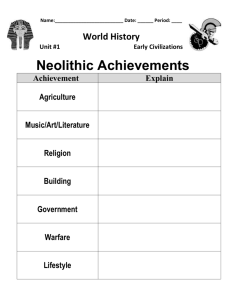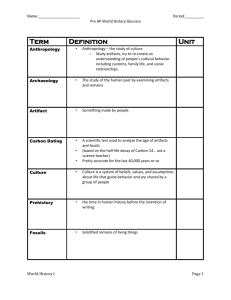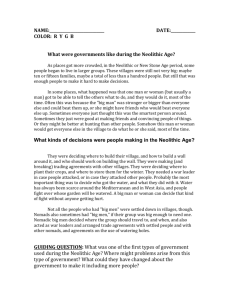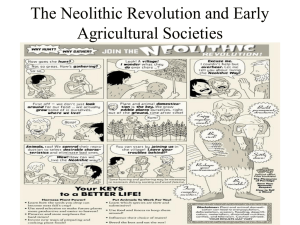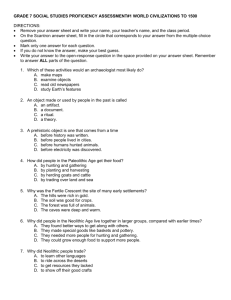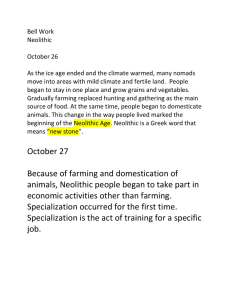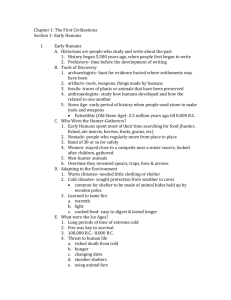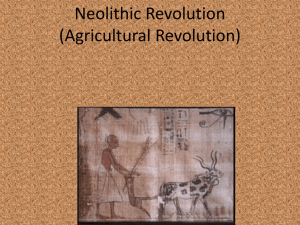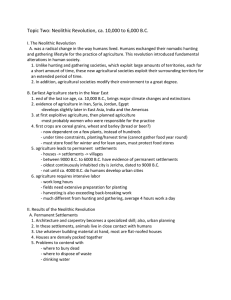File
advertisement
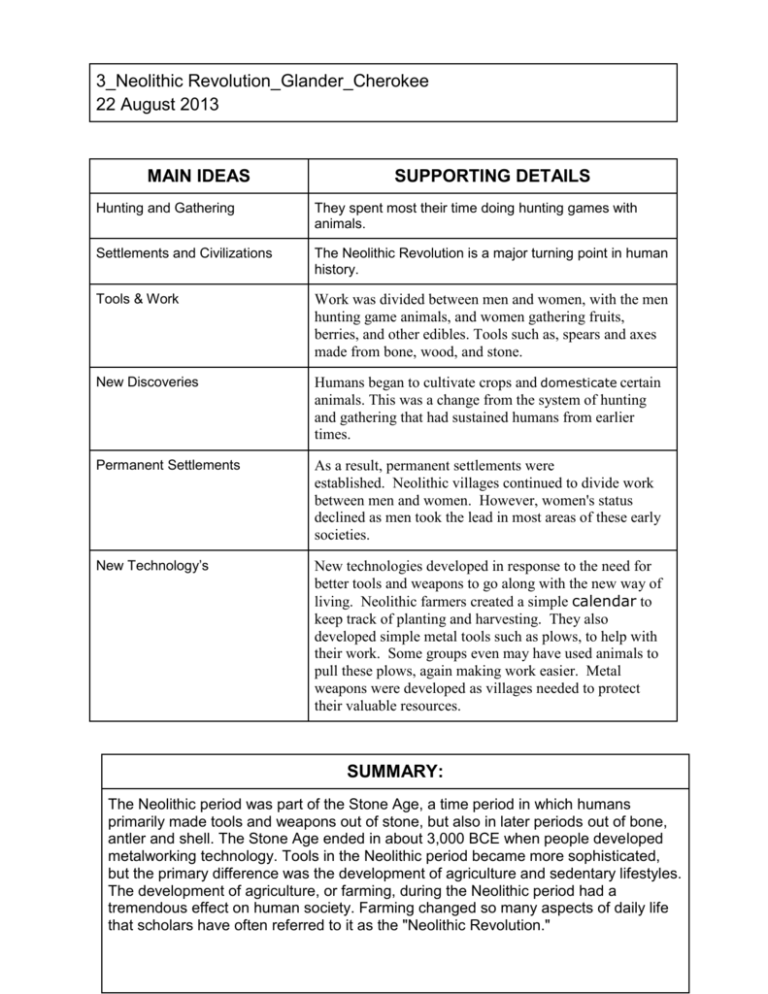
3_Neolithic Revolution_Glander_Cherokee 22 August 2013 MAIN IDEAS SUPPORTING DETAILS Hunting and Gathering They spent most their time doing hunting games with animals. Settlements and Civilizations The Neolithic Revolution is a major turning point in human history. Tools & Work Work was divided between men and women, with the men hunting game animals, and women gathering fruits, berries, and other edibles. Tools such as, spears and axes made from bone, wood, and stone. New Discoveries Humans began to cultivate crops and domesticate certain animals. This was a change from the system of hunting and gathering that had sustained humans from earlier times. Permanent Settlements As a result, permanent settlements were established. Neolithic villages continued to divide work between men and women. However, women's status declined as men took the lead in most areas of these early societies. New Technology’s New technologies developed in response to the need for better tools and weapons to go along with the new way of living. Neolithic farmers created a simple calendar to keep track of planting and harvesting. They also developed simple metal tools such as plows, to help with their work. Some groups even may have used animals to pull these plows, again making work easier. Metal weapons were developed as villages needed to protect their valuable resources. SUMMARY: The Neolithic period was part of the Stone Age, a time period in which humans primarily made tools and weapons out of stone, but also in later periods out of bone, antler and shell. The Stone Age ended in about 3,000 BCE when people developed metalworking technology. Tools in the Neolithic period became more sophisticated, but the primary difference was the development of agriculture and sedentary lifestyles. The development of agriculture, or farming, during the Neolithic period had a tremendous effect on human society. Farming changed so many aspects of daily life that scholars have often referred to it as the "Neolithic Revolution."


